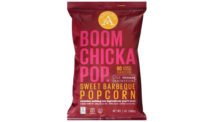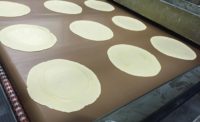Erik Enyedy
Once considered to be just another fad, the clean label movement is here to stay. The year 2017 is positioned to be “the year of clean label,” remembered as a time when baked goods manufacturers embraced customers’ clean label expectations as the new normal.
Opportunity awaits
Clean label is currently a major area of opportunity for baked goods manufacturers. Since today’s consumers are willing to pay a premium for baked goods with shorter, easier-to-understand ingredient lists, manufacturers stand to ultimately profit from investing in the clean label movement.
However, manufacturers should act now, as the opportunity to charge a premium for clean label foods may be a narrow window. As this trend continues to gain momentum among consumers, a clean label may soon become a baseline expectation.
The bigger picture
As manufacturers move through this “year of clean label” and prepare for future developments, it’s important to understand that clean label is only one part of a broader consumer movement.
Increasingly, consumers want to see transparency at every level of the supply chain. Today’s consumers want to know more about where their food comes from, how it’s made and even how it’s transported. Baked goods manufacturers should keep in mind that, while a clean and clear ingredients list can score major points with consumers, it’s just one part of a brand’s larger transparency story.
Another trend related to clean label baked goods is the desire for a balanced diet that incorporates “good fats” and “good sugars.” Not long ago, fats were demonized as the root of all ills. Soon after that, sugars became the culprit. Now, consumers approach food with a more-nuanced understanding. In fact, when asked to define a “healthy eating style” in the 2016 “Food and Health Survey” by the International Food Information Council Foundation, consumers’ top three responses were as follows:
- The right mix of different foods
- Limited or no artificial ingredients or preservatives
- Natural foods
Rather than demonizing fat or sugar, consumers are increasingly interested in a balanced diet based on ingredients they perceive as more natural. That means a clean label can make a difference, even when it comes to treats like some types of baked goods.
How baked goods manufacturers can offer clean solutions
This plan of action can help baked goods manufacturers take the first step toward formulating clean label products that draw a premium price and position your brand as a leader, keeping pace with consumer trends.
- Step #1: Start the conversation: Have your sales teams pass out samples and ask questions about ingredient avoidance and purchase behavior.
- Step #2: Create a definition. Different ingredients matter more—or less—to different people. Find out what clean label means to your customers through interviews with consumer-facing teams. The ingredients mentioned the most often are the ones you should eliminate first.
- Step #3: Work with your suppliers. Your suppliers are partners in your business and can help you deliver great-tasting products within your new clean label definition.
- Step #4: Educate your customers on your definition of clean label and why it matters. Develop sell sheets and talking points so your sales teams can spread the word and help tell the transparency story to customers.
2017 and the future of clean label baked goods
In 2017 and moving forward, baked goods manufacturers would do well to embrace the clean label trend, leveraging the opportunity to sell premium clean label products and position their brand as a leader. In addition, it helps to understand the greater implications of the movement.
The move toward clean label is not just a rejection of certain difficult-to-pronounce ingredients. Rather, it is a symptom of a larger movement toward transparency and authenticity. By approaching this shift in a holistic way, baked goods manufacturers can simultaneously win over consumers while predicting their next concerns and laying a foundation for the future.
It all starts with a dialogue between you and your customers. By talking to them about their needs, concerns and desires, you can develop a clear idea of what clean label means, why it matters and how you can deliver a solution.
Erik Enyedy is director of marketing, Dawn Foods. Visit www.dawnfoods.com for more information.
For more on the clean label movement, see “The growing importance of clean-label foods.”






